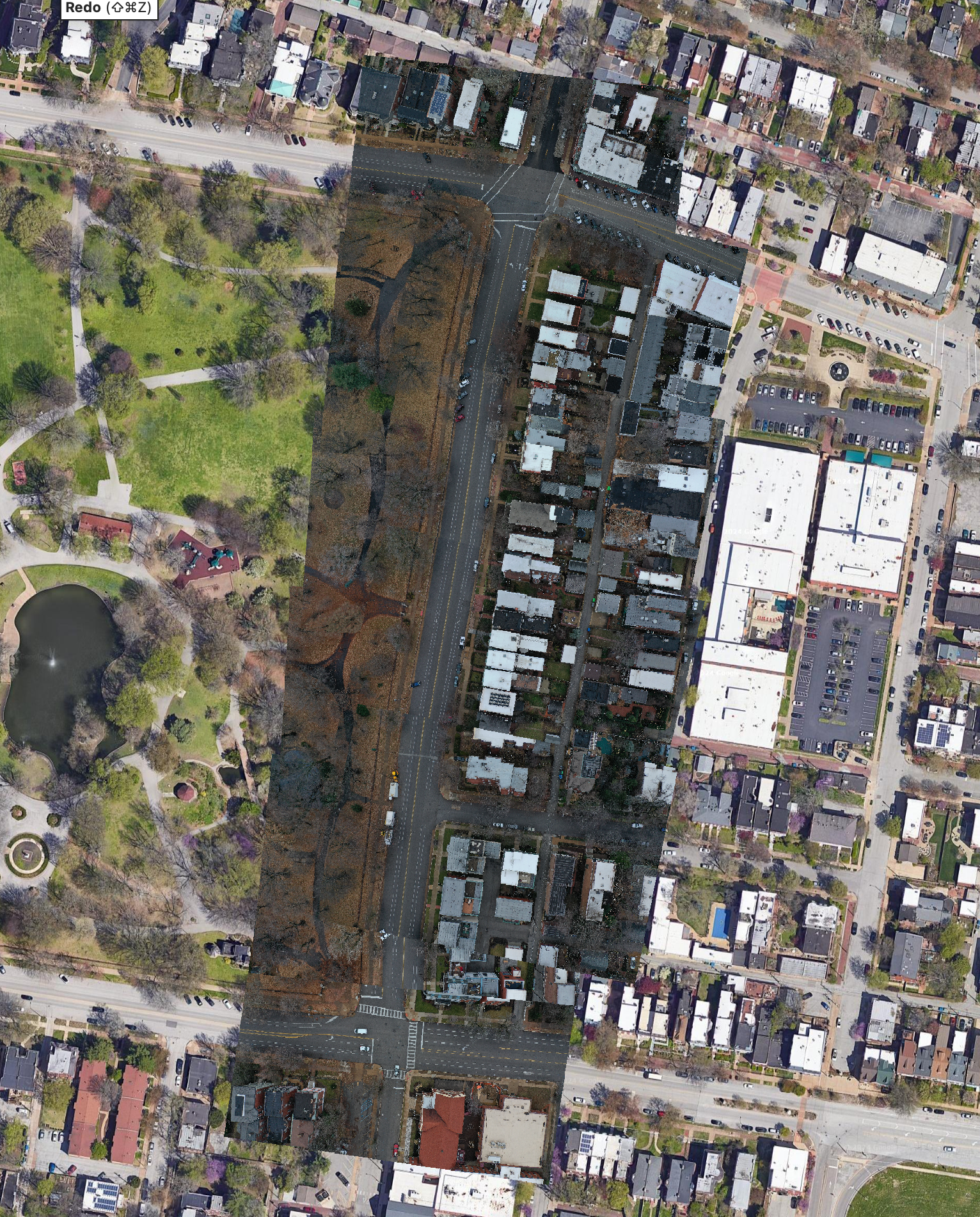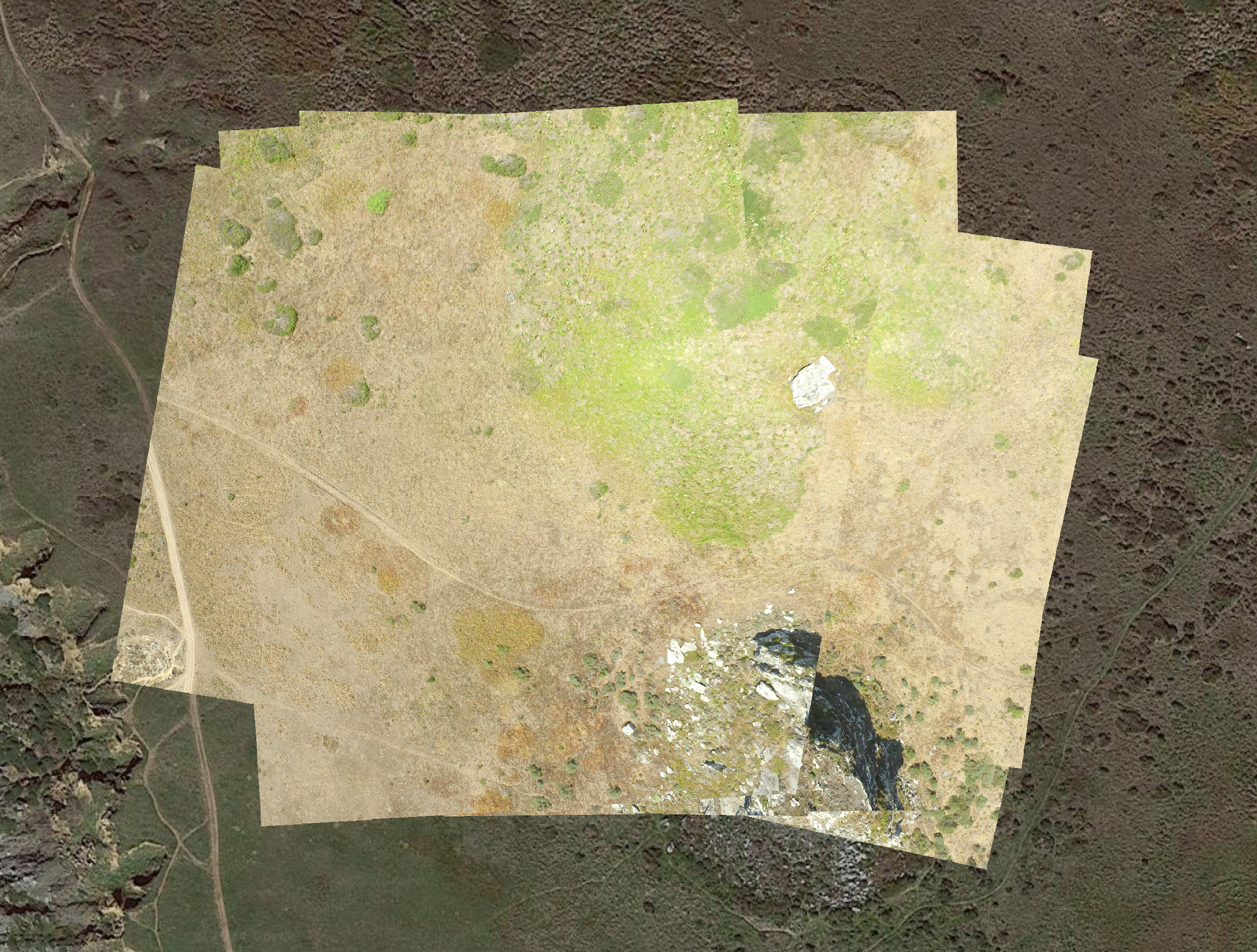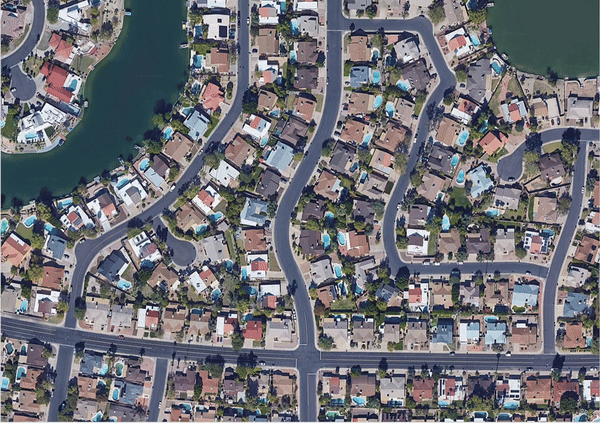Author: Dean Hand
Date Created: 09/07/2019
Name: Drone_Footprints.py
The purpose of this application is to accurately calculate the geographic footprints of individual drone images. Initially, it extracts specific metadata from the drone image files to determine each image's Field of View (FOV). Following this, the application performs a series of calculations to establish the geospatial reference of each image. Subsequently, it adjusts the image to align accurately with the Earth's surface within that FOV, ensuring precise geolocation without the need for stitching images together. This results in a remarkably efficient process. The final output includes a orthorectified GeoTiff image file, accompanied by a GeoJSON file detailing:
- The Drone's Flight Path (as a LineString),
- The Drone's Location at the moment the photo was taken (as a Point),
- The Footprints of Individual Images (as Polygons).
docker build . -t drone-georeference
And then
docker run --rm -v /Path/To/missions:/app/missions -it drone-georeference bash
In the mission folder there are images with telemetry data kept in extif. Mission sample data for download is below. i.e. - dataset 1
To run within the container:
root@d560e3a6d361:/app# python Drone_Footprints.py -i missions/mesa_5_mar_2/images/ -o missions/mesa_5_mar_2/output/
is not a valid file. Switching to Default elevation model
2024-05-27 07:08:26.848 | INFO | __main__:main:171 - User arguments - <br>  output_directory: missions/mesa_5_mar_2/output/<br> input_directory: missions/mesa_5_mar_2/images/<br> DSMPATH: None
2024-05-27 07:08:26.849 | INFO | __main__:main:175 - Initializing the Processing of Drone Footprints
2024-05-27 07:08:26.853 | INFO | __main__:main:188 - Found 33 image files in the specified directory.
2024-05-27 07:08:27.475 | INFO | __main__:main:194 - Metadata Gathered for 33 image files.
2024-05-27 07:08:27.484 | INFO | meta_data:process_metadata:41 - Processing images for GeoTiff and GeoJSON creation.
2024-05-27 07:09:50.318 | SUCCESS | __main__:main:225 - Process Complete. 33 standard GeoTIFFs and a GeoJSON file were created.
root@d560e3a6d361:/app#
The results can be viewed in the output folder.
sudo add-apt-repository ppa:ubuntugis/ubuntugis-unstable
sudo apt-get update
sudo apt-get install libgdal-dev
brew install gdal
Installation via pip
First, you probably want to install into a virtual environment or similar, for example:
python3 -m venv .venv # Install with compatible maximum version of Python (Requires-Python >=3.7,<3.11)
source .venv/bin/activate
The we install using the requirements list as follows:
pip install --no-cache-dir --force-reinstall -r requirements.txt # this current version of GDAL demands the extra tags
Python 3.6 and above
-i - The Default root folder path for the mission you wish to process. Required
-o - The output directory path for the GeoJSON file and GeoTiffs. Required
-w - Sensor Width (default is 13.2), Not Required (Check your Drones Specs for information)
-t - Sensor Height (default is 8.8), Not Required (Check your Drones Specs for information)
-d - Correct images using local magnetic declination (optional)
-e - Desired EPSG code for output GeoTiffs (default is 4326) (optional)
-v - Path to a Digital Surface Model file to use for more accuracy (optional)
-m - Utilize open_elevation.com for more accuracy but extends processing time (location dependent) (optional)
-c - Cloud Optimized GeoTIFF (COG) for output tiff files (optional). Extends processing time
-z - Improve local contrast option to can make details more visible (optional). Significantly
extends processing time
-l - Applies lens distortion correction using lensfun api (optional)
From the src directory, run the following commands:
python Drone_Footprints.py -i '/Path/To/Dataset1/images' -o '/Path/To/Dataset1/output
python Drone_Footprints.py -i "/Path/To/Dataset2/images" -o "/Path/To/Dataset2/output" -w 6.16 -t 4.62
python Drone_Footprints.py -i "/Path/To/Dataset3/images" -o "/Path/To/Dataset3/output" -e 3857
python Drone_Footprints.py -i "/Path/To/Dataset4/images" -o "/Path/To/Dataset4/output" -e 3857 -c n
- IMU calibration - Do this once a month
- Prior to each mission:
- Calibration the drone's gimbal
- Calibration the drone's compass
- Restart the drone
- Shooting angle - for best results, select
Parallel to Main Path - Gimbal Pitch Angle - for best results, capture at NADIR (aka -90° aka straight down)
- Wind - Plays havoc on your drone's telemetry, so plan your missions accordingly
- Immediately after take-off, go STRAIGHT UP. Take a photo immiedately above the homepoint to establish an elevation/altitude reference point
It is highly recommended that you sort the images you want processed into corresponding datasets
- Separate Images by flight mission
- Create a mission folder for each flight mission
- Create an image folder within the mission folder
├── /Path/to/mission_folder
│ ├── images
- If each image appears to be off-angle by a few degrees, it could be magnetic declination. Rerun them back through, but
change the
-dflag and see if that fixes the issue. Sometimes electro-magnetic fields can mess witht he aircrafts compass.
It is a good practice to set your output folder -o location within your flight mission folder as shown in
Example Commands, but it is not required.
├── /Path/to/output_folder
│ ├── geotiffs
│ │ ├── image1.tif
│ │ ├── image1.tif
│ ├── geojsons
│ │ ├── M_2024-02-06_11-16.json
│ ├── logfiles
│ │ ├── L_M_2024-03-21_13-49.log
Geojson name is constructed using the date/time of processing like so:
M= mission2024-02-06= year, month, day11-16= hour, minute
- There still remains many empty cells in drone_sensors.csv, but will update it as that information becomes available.
- Addition sensor and platform compatibilities
Tested and works with:
- Phantom 3 & 4 Series
- Mavic 2 Series
- Mavic 3 Multispectral
- EVO II
- Might not work with some Drones due to difference in metadata keys/values. Older collections may not work for the same reason.
- This accuracy of this process is highly dependent on the accuracy of the drone's telemetry. Like all compasses, the drone's compass is highly susceptible to electromagnetic interference. Therefore, Datasets collected in areas of high magnetic interference (i.e. power lines, large metal structures, etc) will have a higher margin of error.
- Fisheye lenses are impossible to completely compensate for. Sorry.



